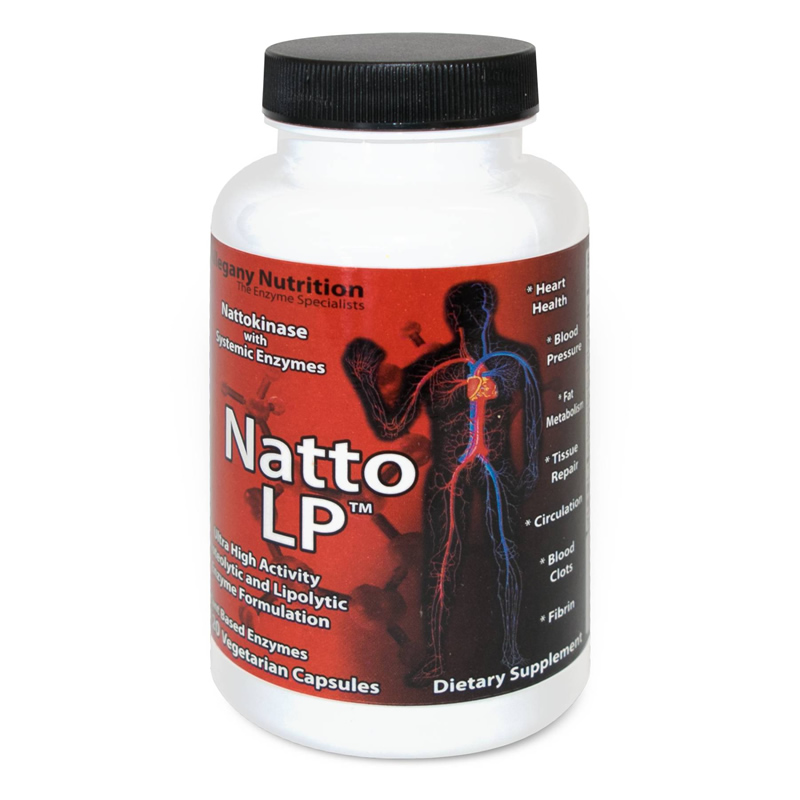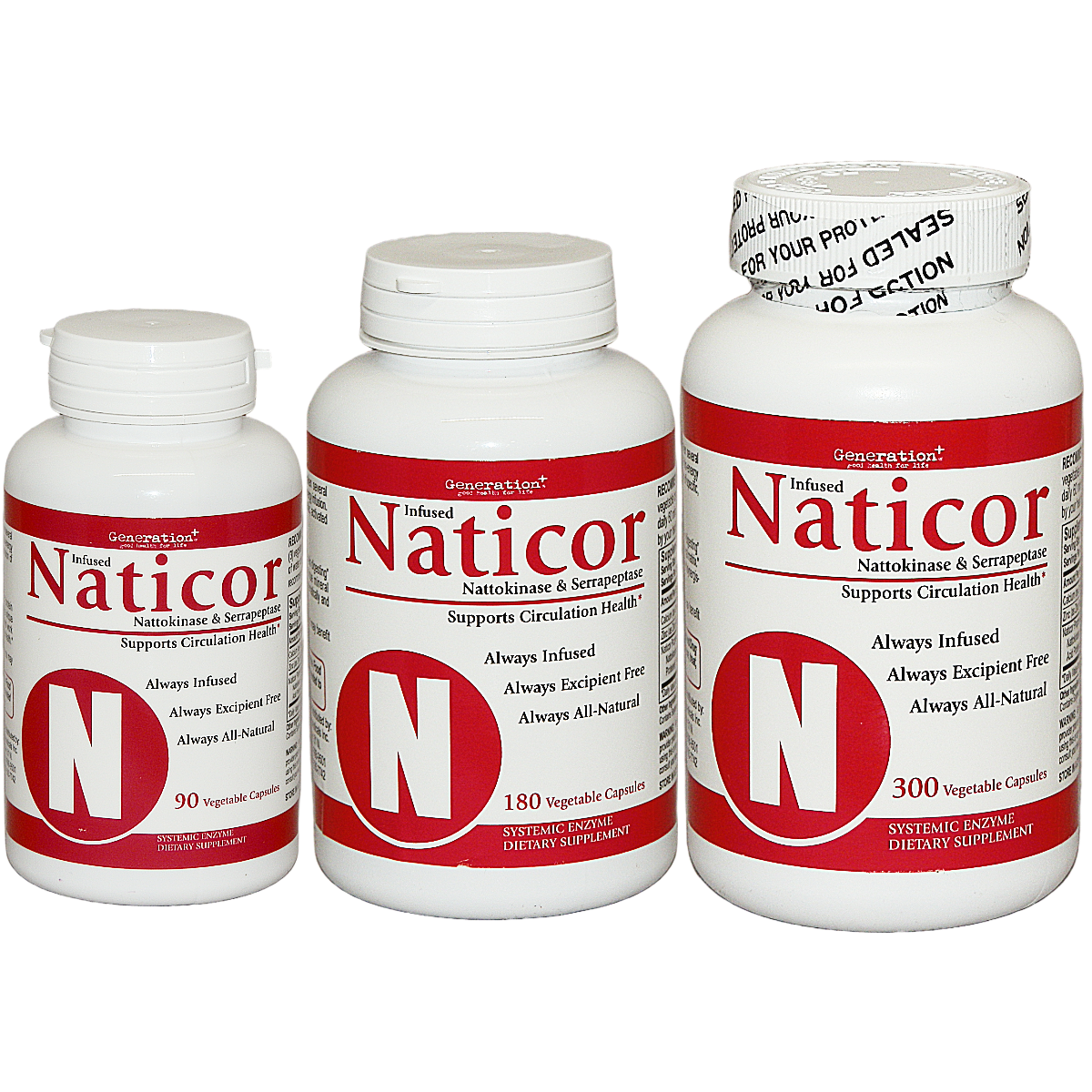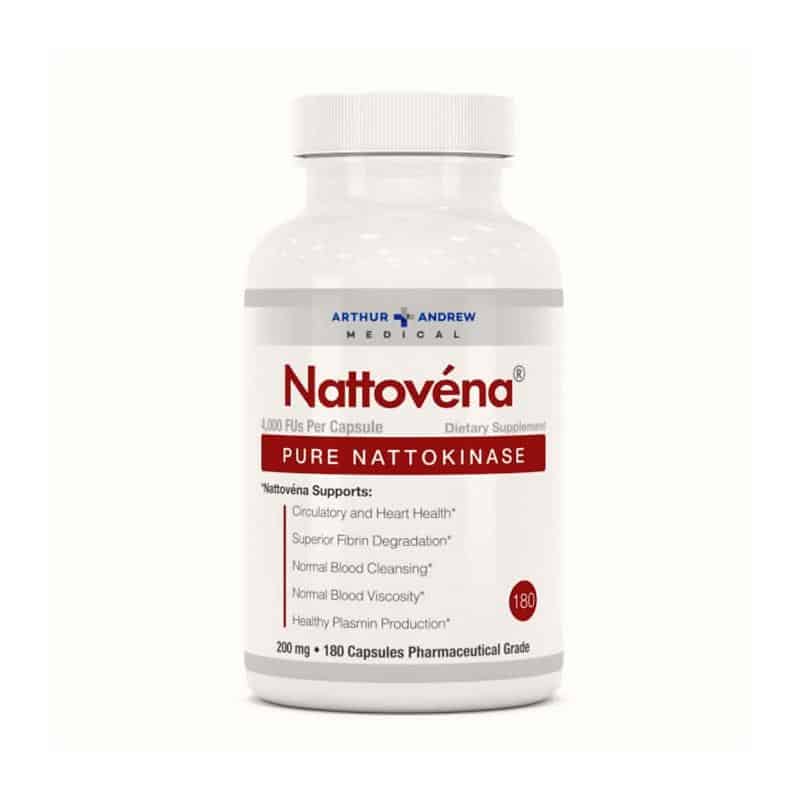No products in the cart.
Live Blood Analysis and Nattokinase
Natto-LP is formulated to work synergistically with the body to assist in fibrin, protein, fat and carbohydrate digestion in the blood. Take a look at the relationship between various conditions and the blood.
Nattokinase has been the subject of 17 studies. Dr. Sumi’s first clinical trial with humans included 12 volunteers. They were administered 200 grams of Natto (the food) each day. Two types of measurement methods were used to test fibrinolytic activity. The Euglobulin Clot Lysis Test stimulated an artificial thrombus (blood clot) within the volunteer’s blood sample. Then they measured the time it took for the clot to completely dissolve. The amount of time it took for the blood clot to dissolve in the Natto group dropped by 48% within 2 hours. An additional study showed an 11% decrease in blood pressure after 2 weeks.
A clinical trial involving dogs was also conducted by Dr. Sumi. Two groups of dogs were used. One group received nattokinase, and the other group received a placebo. A blood clot (thrombus) was created in a leg vein of each dog. The dogs that had nattokinase in their diet had no blood clots within 5 hours. The dogs that were fed placebos still had the blockage caused by the blood clot 18 hours later.
Natto LP Systemic Enzymes are formulated to work synergistically with your body, to assist in fibrin, protein, fat and carbohydrate digestion in your blood. It is the strongest fibrinolytic, proteolytic, and lipolytic enzyme formulation on the market. Take a look at what undigested substances in your blood can do to your cardiovascular system.
Phase Contrast Live Blood Conditions
The dark field microscope is a viable technology used for live blood analysis. This microscope can magnify a tiny drop of blood 15,000 times and can give an accurate picture of floating immune complexes.
We may see red blood cells sticking together, resulting in lower surface area and subsequent low oxygen content that can lead to chronic fatigue, migraine headaches, and poor circulation.
We may see cholesterol and uric acid crystals, which could eventually cause swollen and painful joints.
We may see plaque from undigested fats, that can settle inside the arteries.
We may see free radical damage associated with the symptoms of aging.
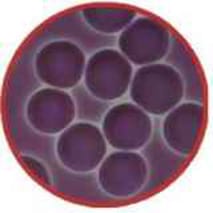 |
Normal Red Blood Cells Notice how the erythrocytes (blood cells) are round and separated. This allows the blood to flow smoothly through blood vessels and capillaries and into cells to provide oxygen, nutrients, antibodies, and hormones. |
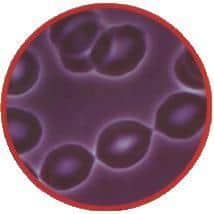 |
Protein Linkage Protein Linkage occurs when excess undigested protein and fat in the blood coats the red blood cells and causes them to stick together. This increase blood viscosity(thickness) and stress on the circulatory system. |
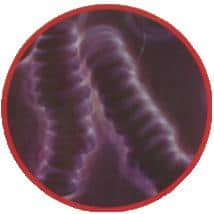 |
Rouleau Rouleau results from a large amount of undigested protein and fat in the blood. Notice that the red blood cells are stacked like coins. This reduces their surface area and the amount of oxygen that can be carried by them. |
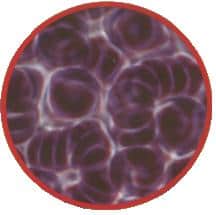 |
Erythrocyte Aggregation Erythrocyte Aggregation results from a large amount of undigested proteins and fats in the blood. Notice the red blood cells all bunched together. This reduces their ability to carry oxygen and vital nutrients. It also increases blood viscosity (thickness), increasing stress on the circulatory system. |
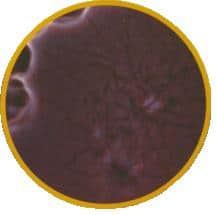 |
Fibrin Fibrin may resemble a spider web. It is part of the blood clotting mechanism, however fibrinogen shows up in the blood when the there are toxins present indicating inflammation. It may indicate improper elimination, and liver stress. |
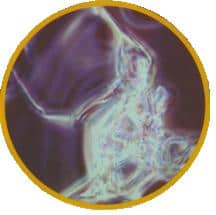 |
Cholesterol Crystal Cholesterol Crystals result from excess undigested fats not being cleared from the blood. Notice the crystal appears milky or clear. |
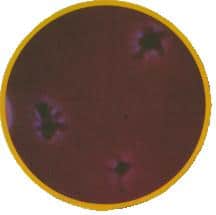 |
Thrombocytes Platelets are what makes the blood clot when there is an injury. This is what stops the bleeding if you cut yourself. Large amounts of platelets may appear in the blood when there is inflammation or injury. |
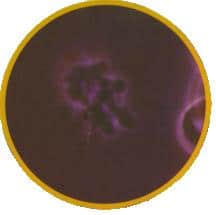 |
Thrombocyte Aggregation Thrombocyte Aggregation results from platelets sticking together in large masses due to excessive proteins, fats, or sugars. |
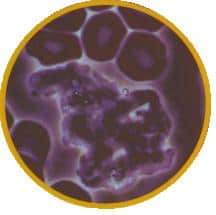 |
Plaque Cooked/processed fats, and platelets sticking together and hardening, sometimes it sticks to the inside of blood vessel walls. |
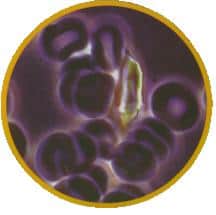 |
Uric Acid Crystals Uric Acid is a byproduct of protein digestion. Large amounts can cause joint pain, gout, and kidney stones. |
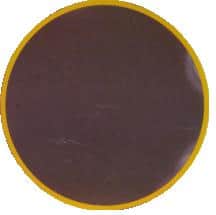 |
Chylous Small grayish dots in the blood known as blood fats. Chylous usually shows up after a fatty meal but should be gone within 3 to 5 hours. |
References
1. H. Sumi, H. Hamada, H. Tsushima, H. Mihara, A novel fibrinolytic enzyme (nattokinase) in the vegetable cheese natto; a typical and popular soybean food in the Japanese diet, Experimentia 1987, Oct 15;43(10);1110-1.
2. M. Maruyama, H. Sumi, Effect of Natto Diet on Blood Pressure, JTTAS, 1995.
3. Natto-Traditional Japanese Fermented Soy Beans with Recently Discovered Health Benefits and Novel Industrial Applications, Enzyme Wave, Volume 3, June 2002, Amano Enzyme, Inc., page 2-4.
Enzymes in Blood Under the Microscope
Enzymes act as scavengers of foreign substances throughout the body. Enzymes in the body’s white blood cells are responsible for destroying foreign, disease-producing substances in the blood and lymph. During illness and infection, white blood cells increase to fight off pathogens. When cooked foods are eaten, the body reacts just as though we had an acute illness. Within 30 minutes of eating cooked foods, our white-blood-cell count increases dramatically. This means that the immune system is being unnecessarily called into action virtually every time we eat.
Studies show that mobilization and increase of white blood cells do not happen when raw food is consumed. Molecules from improperly digested proteins and fats that are small enough to get into the blood, but too large to get into the cells, are called floating immune complexes. They are now considered toxic invaders in the body instead of nutrients.





